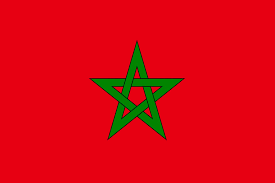Language/Moroccan-arabic/Grammar/Adjective-Agreement
 Հայերէն
Հայերէն Български език
Български език 官话
官话 官話
官話 Hrvatski jezik
Hrvatski jezik Český jazyk
Český jazyk Nederlands
Nederlands English
English Suomen kieli
Suomen kieli Français
Français Deutsch
Deutsch עברית
עברית हिन्दी
हिन्दी Magyar
Magyar Bahasa Indonesia
Bahasa Indonesia فارسی
فارسی Italiano
Italiano 日本語
日本語 Қазақ тілі
Қазақ тілі 한국어
한국어 Lietuvių kalba
Lietuvių kalba Νέα Ελληνικά
Νέα Ελληνικά Şimali Azərbaycanlılar
Şimali Azərbaycanlılar Język polski
Język polski Português
Português Limba Română
Limba Română Русский язык
Русский язык Српски
Српски Español
Español العربية القياسية
العربية القياسية Svenska
Svenska Wikang Tagalog
Wikang Tagalog தமிழ்
தமிழ் ภาษาไทย
ภาษาไทย Türkçe
Türkçe Українська мова
Українська мова Urdu
Urdu Tiếng Việt
Tiếng Việt
| ◀️ Renting an Apartment — Previous Lesson | Next Lesson — Comparative and Superlative Adjectives ▶️ |
As a beginner Moroccan Arabic learner, it's extremely important to learn how to agree adjectives with nouns. Adjectives are words that describe or modify nouns, and they take different forms depending on the gender and number of the noun they are describing. In this lesson, we will cover the basics of adjective agreement in Moroccan Arabic.
Don't miss the chance to check out these pages as you wrap up this lesson: The verb to sleep & How to use “to be” with adjectives in Moroccan Arabic.
Gender Agreement
Moroccan Arabic, like many other languages, distinguishes between masculine and feminine nouns. Adjectives must agree with the gender of the noun they describe. Here are some examples:
| Moroccan Arabic | Pronunciation | English |
|---|---|---|
| بغيت لونجير فلوز | Bghit longir flwz | I want a yellow t-shirt |
| لونجيرة كتبنية | Longirat katbnia | The blue t-shirt is new (feminine) |
| هاد المكتب كيشريرو بيض | Had lmktb kyshrero byd | This desk is buying white (masculine) |
| هاد لمكتب كياشريرو بيضة | Had lmktb kiyshrero byda | This desk is buying white (feminine) |
In the first example, the noun "longir" (t-shirt) is masculine, so the adjective "flwz" (yellow) is in masculine form. In the second example, the noun "longirat" (t-shirt) is feminine, so the adjective "katbnia" (new) is in feminine form. Similarly, in the third example, the noun "mktb" (desk) is masculine, so the adjective "byd" (white) is in masculine form. In the fourth example, the noun "lmktb" (desk) is feminine, so the adjective "byda" (white) is in feminine form.
Note: Some adjectives have the same form for both masculine and feminine, such as "katbnia" in the second example.
Number Agreement
Moroccan Arabic nouns have two numbers: singular and plural. Adjectives must also agree with the number of the noun they describe. Here are some examples:
| Moroccan Arabic | Pronunciation | English |
|---|---|---|
| هاد شي كرسي | Had shi krsi | This is a chair (singular) |
| هاد شي كراسي | Had shi krasī | These are chairs (plural) |
| هاد لبغيتي كرسي كيفرش | Had lbghiti krsi kifērsh | This chair that I wanted is broken (singular) |
| هاد لبغيتي كراسي كيفرشو | Had lbghiti krasī kifērsho | These chairs that I wanted are broken (plural) |
In the first example, the noun "krsi" (chair) is singular, so the adjective "shi" (this) is also in singular form. In the second example, the noun "krasī" (chairs) is plural, so the adjective "shi" (these) is also in plural form. Similarly, in the third example, the noun "krsi" (chair) is singular, so the adjective "lbghiti" (that I wanted) is also in singular form. In the fourth example, the noun "krasī" (chairs) is plural, so the adjective "lbghiti" (that I wanted) is also in plural form.
Position of Adjectives
In Moroccan Arabic, adjectives usually come after the noun they describe. Here are some examples:
- بغيت خويا خدام يجيب ليا الكتاب لي كتبتوا || Bghit khuya khaddam yjib lia lktab li ktbto || I want my brother who works to bring me the book that I wrote.
In this example, the adjective "khaddam" (who works) comes after the noun "khuya" (brother). This is a common pattern in Moroccan Arabic.
Exceptions
There are a few exceptions to the rules of adjective agreement in Moroccan Arabic, such as:
- Adjectives that end in "i" or "u" do not change form for feminine nouns.
For example:
| Moroccan Arabic | Pronunciation | English |
|---|---|---|
| هاد البَغْل ديالي خفيف | Had lbaghl dayli khfif | This is my light-colored mule |
| هد الخرفان ديالي صغيرات | Had lkhrafān dayli sghirat | These are my small-sized sheep |
In the first example, the adjective "khfif" (light) does not change form for the feminine noun "baghl" (mule). In the second example, the adjective "sghirat" (small-sized) does not change form for the feminine noun "khrafān" (sheep).
Conclusion
In conclusion, understanding how to agree adjectives with nouns is an essential part of mastering Moroccan Arabic grammar. Remember to pay attention to the gender and number of the noun you are describing, and keep in mind the exceptions to the rules. With practice, you will soon be able to form accurate and grammatically correct sentences in Moroccan Arabic.
Sources
Congratulations on finishing this lesson! Explore these related pages to keep learning: The verb "To want" & Adjectives.
Other Lessons
- Independent Pronouns
- Give your Opinion
- Possessive Pronouns
- Verbs
- Relative Pronouns
- The verb "To want"
- Alphabet and Pronunciation in Moroccan Arabic
- Demonstrative Pronouns
- Demonstrative Adjectives
- How to Use Have
| ◀️ Renting an Apartment — Previous Lesson | Next Lesson — Comparative and Superlative Adjectives ▶️ |

